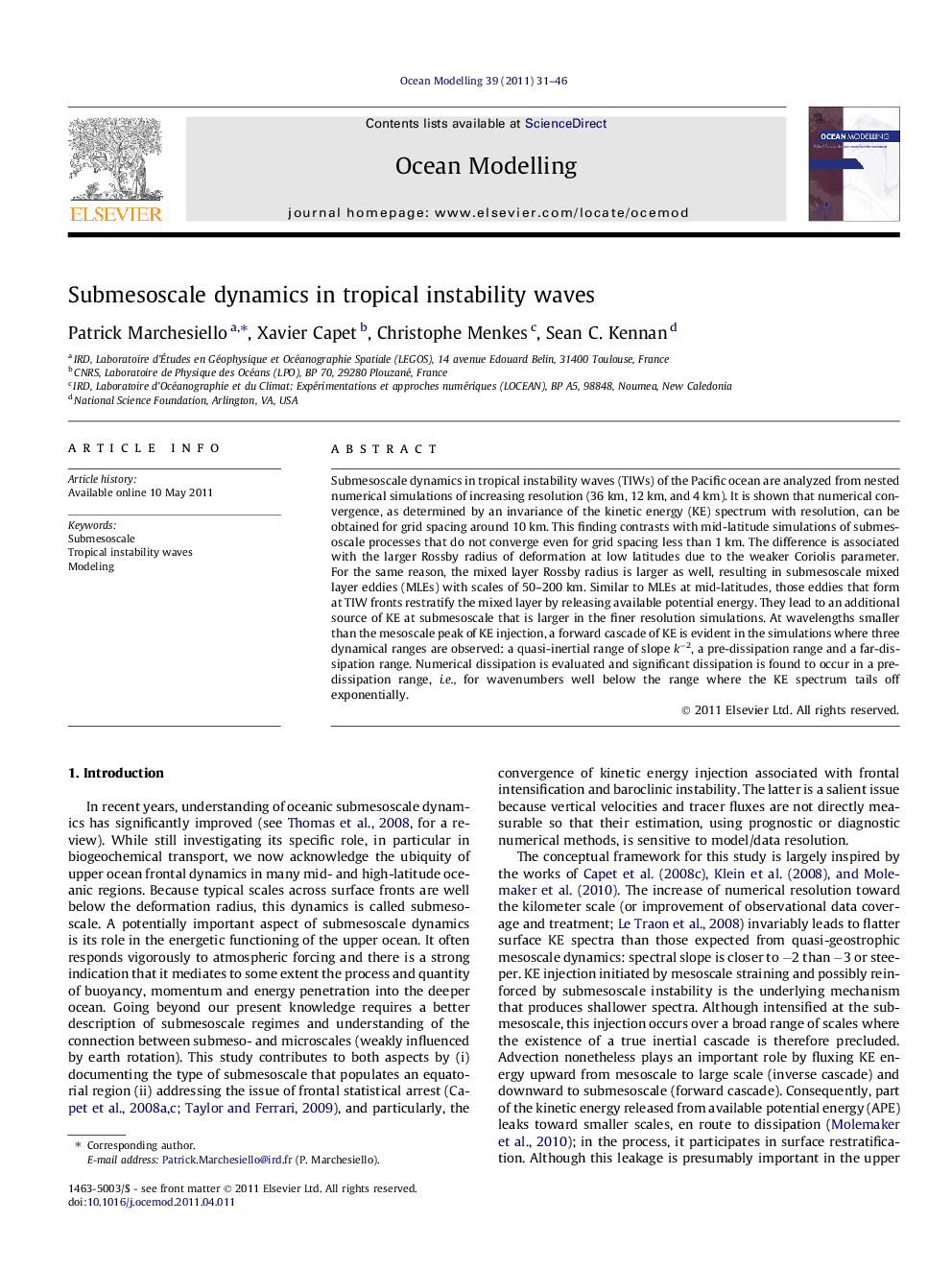| Article ID | Journal | Published Year | Pages | File Type |
|---|---|---|---|---|
| 4552397 | Ocean Modelling | 2011 | 16 Pages |
Submesoscale dynamics in tropical instability waves (TIWs) of the Pacific ocean are analyzed from nested numerical simulations of increasing resolution (36 km, 12 km, and 4 km). It is shown that numerical convergence, as determined by an invariance of the kinetic energy (KE) spectrum with resolution, can be obtained for grid spacing around 10 km. This finding contrasts with mid-latitude simulations of submesoscale processes that do not converge even for grid spacing less than 1 km. The difference is associated with the larger Rossby radius of deformation at low latitudes due to the weaker Coriolis parameter. For the same reason, the mixed layer Rossby radius is larger as well, resulting in submesoscale mixed layer eddies (MLEs) with scales of 50–200 km. Similar to MLEs at mid-latitudes, those eddies that form at TIW fronts restratify the mixed layer by releasing available potential energy. They lead to an additional source of KE at submesoscale that is larger in the finer resolution simulations. At wavelengths smaller than the mesoscale peak of KE injection, a forward cascade of KE is evident in the simulations where three dynamical ranges are observed: a quasi-inertial range of slope k−2, a pre-dissipation range and a far-dissipation range. Numerical dissipation is evaluated and significant dissipation is found to occur in a pre-dissipation range, i.e., for wavenumbers well below the range where the KE spectrum tails off exponentially.
► There is a shift of submesoscale dynamics to larger scales in tropical oceanic regions. ► Tropical instability waves can be accurately modeled at 10 km resolution. ► Restratification by submesoscale turbulence is important in TIWs. ► Explicit resolution in models may be coarser than usually estimated due to far reaching effects of numerical closure.
